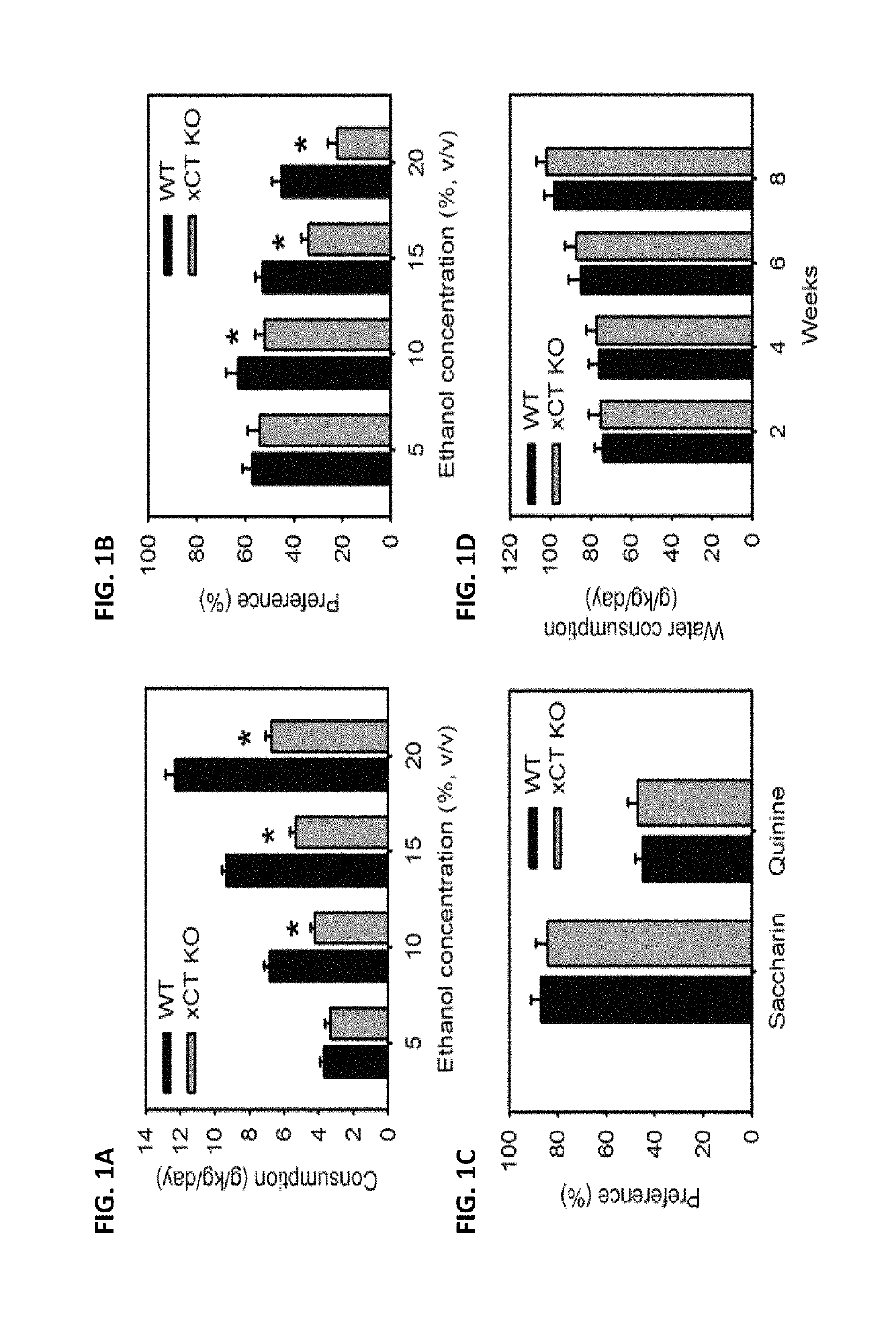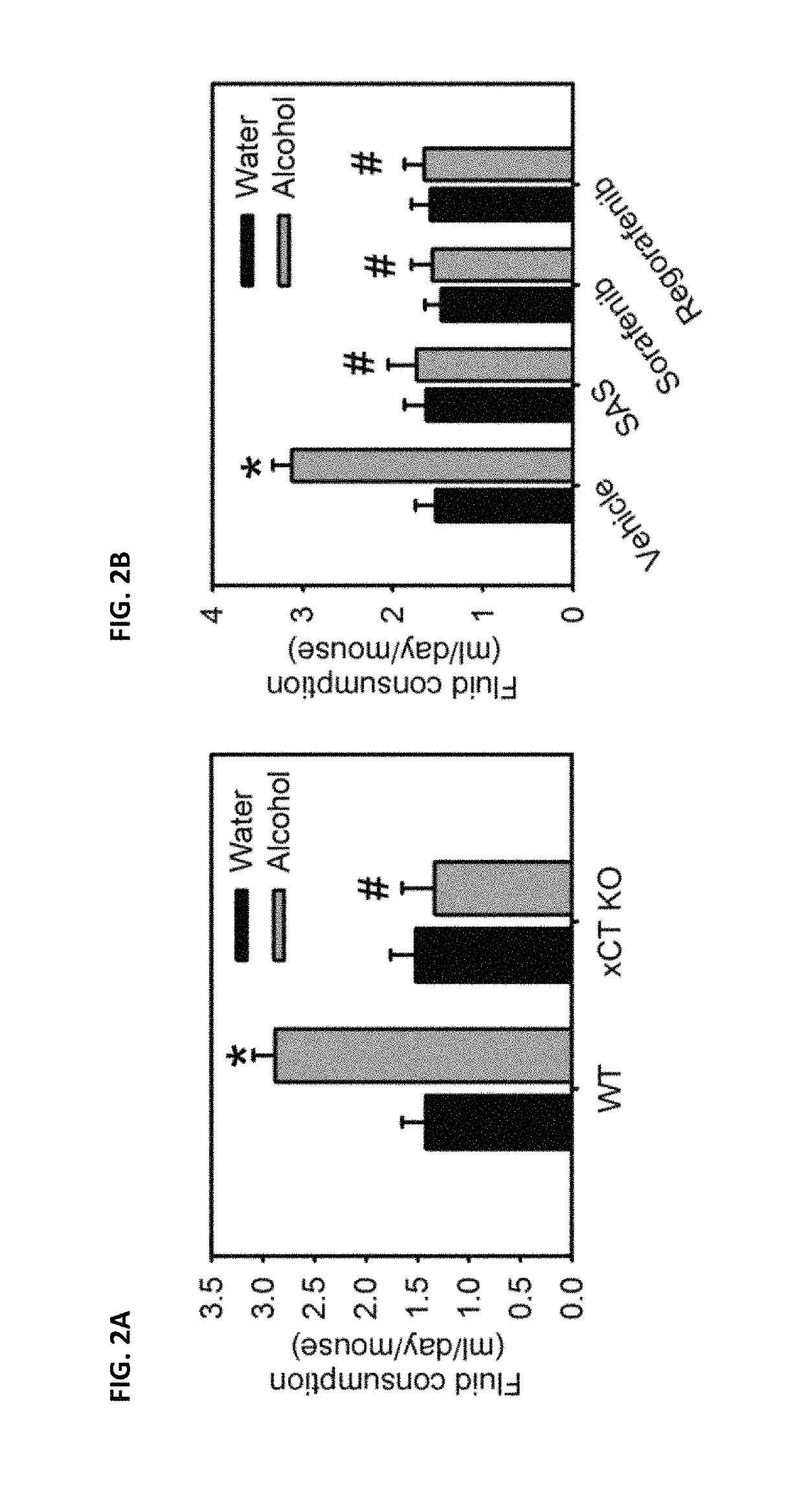Use of inhibitor of cystine-glutamate transporter
a cystine-glutamate transporter and inhibitor technology, applied in the direction of heterocyclic compound active ingredients, drug compositions, organic chemistry, etc., can solve the problems of no reliable and successful treatment, major health problems worldwide, addiction and brain damage, etc., to inhibit the brain damage of substances, improve the effect of craving behaviour and improving the seeking and craving behaviour
- Summary
- Abstract
- Description
- Claims
- Application Information
AI Technical Summary
Benefits of technology
Problems solved by technology
Method used
Image
Examples
example 3
Assay for Improvement of Cocaine Addiction Treatment and Alcohol Addiction Treatment
[0060]To test whether system xc−plays the same role in other substance-use disorders, xCT KO mice and WT mice were enforced to receive the intraperitoneal injection of cocaine for 7 days and then transferred to free-choice drinking model with 2 bottles, one containing diluted cocaine and the other containing normal water for 8 days. As well as alcohol-dependent mice, WT mice have cocaine preference behavior after chronic cocaine exposure and displayed a craving behavior (FIG. 3A). However, xCT KO mice were attempted to drink normal water, suggesting genetic deficiency of system xc − suppressed cocaine addiction. In addition, cocaine-dependent WT mice were daily treated with sulfasalazine or vehicle after chronic cocaine exposure. Amazingly, sulfasalazine treatment fully inhibited cocaine preference and craving behaviours compared to vehicle treatment (FIG. 3B). These results show that blockage of sys...
example 5 chronic
Cocaine Treatment
[0062]The similar effects were also able to observe in chronic cocaine treatment. The number of apoptotic cells were significantly increased in chronic cocaine-treated WT mice compared with control mice (FIG. 5A). However, no significant difference between groups was observed in xCT KO mice. Moreover, WT mice treated with sulfasalazine during chronic cocaine exposure exhibited significantly reduced the number of apoptotic cells compared with control mice (FIG. 5B). On the other hand, wild type cortical cells were treated with sulfasalazine, sorafenib or regorafenib for 18 hours during the alcohol or cocaine incubation. sulfasalazine, sorafenib and regorafenib significantly inhibited substance-induced apoptosis (FIG. 6). These results suggest that pharmacological inhibition of system xc − with administration of system xc − inhibitors significantly improves substance-induced brain damage treatment.
PUM
| Property | Measurement | Unit |
|---|---|---|
| density | aaaaa | aaaaa |
| physical | aaaaa | aaaaa |
| addictive disorder | aaaaa | aaaaa |
Abstract
Description
Claims
Application Information
 Login to View More
Login to View More - R&D
- Intellectual Property
- Life Sciences
- Materials
- Tech Scout
- Unparalleled Data Quality
- Higher Quality Content
- 60% Fewer Hallucinations
Browse by: Latest US Patents, China's latest patents, Technical Efficacy Thesaurus, Application Domain, Technology Topic, Popular Technical Reports.
© 2025 PatSnap. All rights reserved.Legal|Privacy policy|Modern Slavery Act Transparency Statement|Sitemap|About US| Contact US: help@patsnap.com



